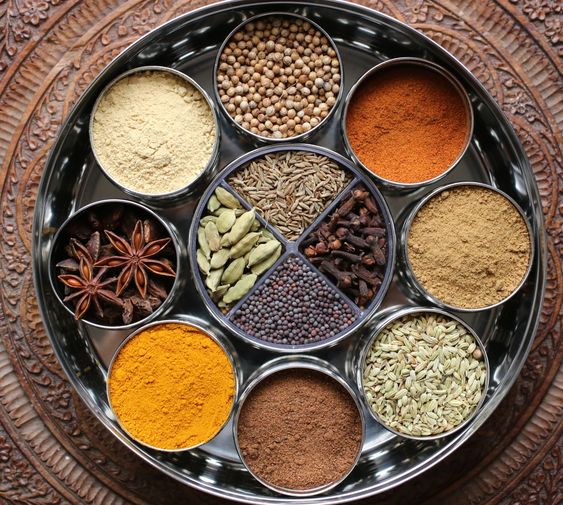Indian cuisine is renowned for its rich and diverse flavors, and at the heart of this culinary adventure lies the enchanting world of masala. The term “masala” refers to a blend of spices that can elevate any dish to new heights of taste and aroma. In this blog post, we’ll delve into the fascinating realm of Indian masala, exploring its history, diverse types, and the magical touch it adds to countless dishes.
The Origins of Masala:
Masala has a deep-rooted history in Indian culinary traditions. The word itself is derived from the Sanskrit word “mas,” meaning a mixture of spices. Historical records reveal that the use of masala dates back centuries, with each region in India boasting its unique blend of spices.
From the fiery garam masala of North India to the aromatic sambar powder of the South, the diversity in masalas reflects the varied cultural influences that have shaped India’s gastronomic landscape.
Key Components of Indian Masala:
1. A Symphony of Spices:
Indian masalas are characterized by a harmonious blend of spices, each contributing its distinct flavor and aroma. Common spices include cumin, coriander, cardamom, cinnamon, cloves, and black pepper. The proportions and specific spices used can vary, giving rise to an array of masala blends tailored to different dishes.
2. Regional Variations:
One of the captivating aspects of Indian masala is the regional diversity. For instance, the East might favor mustard seeds and fenugreek in their masalas, while the West might opt for a blend with a hint of coconut. Understanding these regional nuances adds depth to your culinary exploration.
Popular Types of Indian Masala:
1. Garam Masala:
A staple in North Indian cuisine, garam masala is a warming blend of spices like cardamom, cinnamon, and cloves. It adds depth to dishes like biryanis and curries, providing a comforting and aromatic experience.
2. Sambar Powder:
South India boasts the vibrant and tangy flavors of sambar powder, a masala essential for preparing the beloved sambar dish. With ingredients like coriander, cumin, and fenugreek, this masala brings a burst of flavors to lentil-based dishes.
3. Panch Phoron:
Eastern India introduces us to panch phoron, a unique five-spice blend consisting of mustard seeds, cumin, fennel, fenugreek, and nigella seeds. This masala is often tempered in hot oil before being added to dishes, imparting a distinctive flavor to Bengali cuisine.
The Culinary Magic of Indian Masala:
1. Elevating Vegetarian Delights:
Indian masalas play a pivotal role in vegetarian dishes, transforming humble ingredients like potatoes and peas into culinary masterpieces. The use of masala in vegetarian cooking showcases the versatility of these spice blends.
2. Meat and Seafood Alchemy:
Non-vegetarian delights also benefit immensely from the magic of masala. Whether it’s the tandoori spices in grilled meats or the coastal flavors of seafood masalas, the world of Indian masala knows no bounds.
Cooking with Indian Masala: Tips and Tricks:
1. Freshness Matters:
To truly savor the essence of Indian masala, use freshly ground spices whenever possible. This enhances the potency of the flavors and ensures a more authentic taste.
2. Experimentation is Key:
Don’t hesitate to experiment with masala blends. Mix and match spices to suit your palate, and feel free to adjust quantities based on personal preferences. The beauty of masala lies in its adaptability.
Conclusion:
Embarking on a journey into the world of Indian masala is a culinary adventure like no other. From the bustling spice markets of Delhi to the serene spice plantations in Kerala, the diversity and richness of Indian masala reflect the country’s vibrant culture. Whether you’re a seasoned chef or an amateur cook, incorporating Indian masala into your kitchen will undoubtedly elevate your culinary creations to new heights. So, let the aromatic symphony of masala guide you on a gastronomic exploration through the heart of India.
